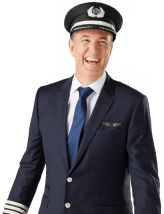Fiji has been on the map of world-class surfing destinations for decades. But it’s only been in the last seven years – since the government enshrined in law the Regulation of Surfing Areas Decree 2010 – that the Melanesian island country has been fully accessible to an increasing number of visitors who design their itineraries around chasing the swell.
There are many locations to rent surf gear in Fiji, and plenty of companies willing to help get you to breaks.
Up until 2010, access to world-renowned breaks, including Cloudbreak, Restaurants and Swimming Pools, was reserved for the exclusive use of guests staying at resorts such as Tavarua and Namotu, who had to pay hundreds of dollars a day for the privilege, as well as room tariffs.
A Hidden Paradise
According to the Encyclopaedia of Surfing website, Californian surfer Dave Clark spent two months in 1982 surfing on Tavarua with his cousin. Clark and fellow Californian surfer Scott Funk built an early version of Tavarua Island Resort that year after meeting with local tribes to secure surfing rights to the area’s best breaks. In 1984 both the resort and surf break gained international attention when they featured on the cover of Surfer magazine.
Tavarua Island and its resort gained attention in 1984 on the cover of Surfer magazine.
The resort’s rights to Cloudbreak was tested and challenged by both Fijian and foreign surfers right up until 2010, when the Fijian government finally lifted restrictions on surfing the island’s waves.
A Swell Place
Although it’s been documented that surfing was practised in Fiji as far back as the late 1800s, the sport has only recently seen a resurgence in popularity with locals. This comes thanks to 2010’s decree, coupled with a push by the Fiji Surfing Association to make it a widespread sport among Fijians.
Discover the surfing hotspots around Fiji.
Images of Tavarua’s epic waves have helped secure Fiji’s status as a premier surf destination since it held its first prosurfing contests in the late 1980s. The first world-tour event was held at Cloudbreak in 1999 and, by 2012, most of the world’s top big-wave riders had the island on their radar. As far as surfing destinations go, the fact that Fiji’s waves are now open to all means it continues to shape up as an attractive proposition for a South Pacific surf trip.
Today it's so much easy to access the breaks in Fiji and get a good wave.
Surfing Seasons
Fiji’s cyclone season runs from November to April. While Cloudbreak is best from May to October, the cyclone season often produces great surfing conditions along the Coral Coast. The weather in Fiji is tropical year-round, but there are two distinct surfing seasons: the dry season (winter), from March to October, which produces the biggest waves; and the wet season (summer), from November to March, which has lighter winds and less consistent swells. The beauty of travelling to Fiji in the low season is that the waves will be less crowded.
BYO Board and Booties
For any surf trip to Fiji, it is recommended surfers take a short board plus a larger semi-gun for bigger days. The seas are warm, so board shorts and a rash vest will be warm enough. Also pack booties, sunscreen, surf wax, a spare leg rope and a first-aid kit.
Cloudbreak is one of the most famous surf breaks in Fiji.
Getting To The Breaks
Sigatoka Sand Dunes National Park offers the only beach break in Fiji – most of the best waves are located on outer coral reefs and are suitable for experienced surfers only (gaining access to them is a mission, but a fun one at that). Boat trips are offered from most of the resorts in the vicinity of the famed breaks. As well as being a competent surfer, you must be comfortable with diving into this landscape, where coral reef cities and marine life abound.
Malolo Beach Resort is a top choice when deciding where to stay.
Staying There
Castaway Island is perfect for those with a few non-surfers in tow, as resort activities range from beach volleyball to barefoot boxing. Surfing tours can be arranged to breaks including Wilkes Passage, Swimming Pools, Namotu Right, Namotu Left, Cloudbreak and Desperation.
Nanuku Auberge Resort is located on the main island of Viti Levu. It works with a nearby surf charter company that offers daily tours to both popular and little-known surf breaks when conditions are good. Guests can also rent surfboards from the charter company.
Malolo Beach Resort near Cloudbreak offers plenty of fun under the sun, including jetski safaris, wakeboarding, waterskiing and surfing.
Don't surf? Fiji is great for scuba diving too.
Water Adventures For Non-Surfers
If you aren’t up for surfing, know that Fiji has dozens of bays and beaches protected by the reef that are perfect for paddleboarding and sea kayaking. Snorkellers will also enjoy drifting around the offshore reefs around Beqa Lagoon. Seeking a bit more adventure? You can dive with up to eight different species of sharks at Beqa Lagoon, a world-class diving destination located in the waters off Waidroka Bay Resort.
For the hottest deals in travel visit your local Flight Centre store, call 131 600 or book now on the Flight Centre App. Want more inspiration? Check out our Fiji Travel Guide!













